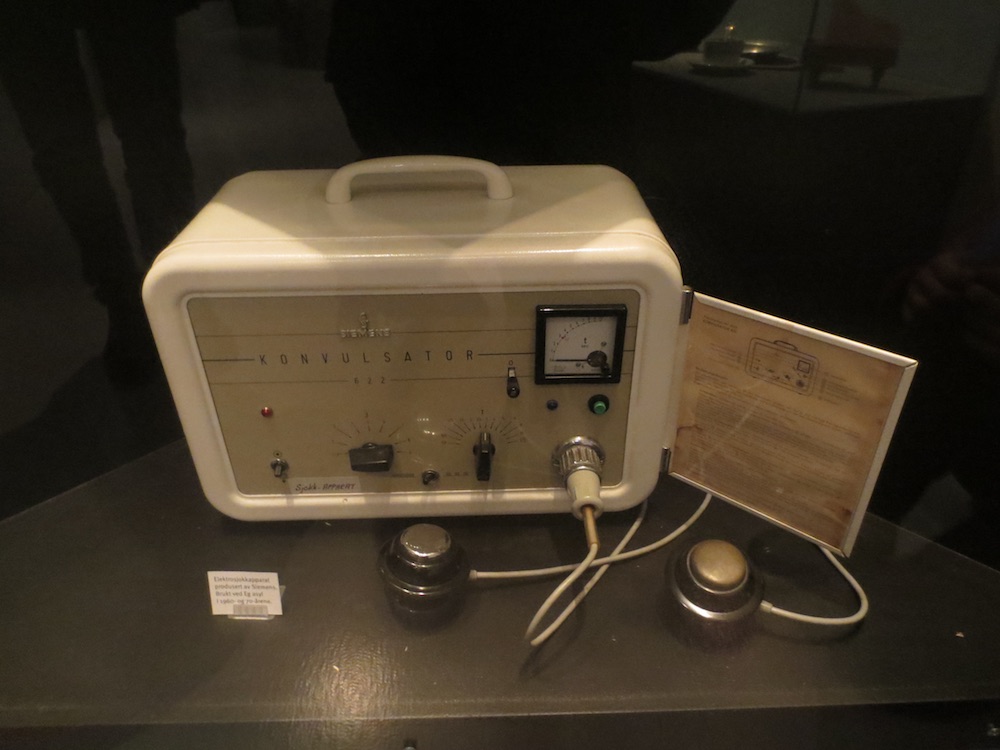Despite Stigma, 'Electroshock' Therapy Gains Patient Appreciation

Electroconvulsive therapy (ECT), sometimes called electroshock therapy, was once considered "barbaric," but many patients with mental health conditions who receive the treatment today have a positive view of it.
Most patients in a new study who received the treatment said they would try it again.
The ECT procedure involves placing electrodes on the forehead and passing electrical currents through the brain in order to induce a seizure lasting from 30 to 60 seconds. The treatment has been around since the 1930s, used as a treatment for certain mental health conditions, but it remains controversial. [5 Controversial Mental Health Treatments]
Some of the stigma attached to the therapy relates to earlier versions of the treatment, in which high doses of electricity were used without anesthesia, according to the Mayo Clinic. Today, the therapy is much safer: Patients receive anesthesia, and the doses of electricity that are used are more controlled, the Mayo Clinic says.
"ECT is a very effective but underused treatment," study co-author Dr. Latha Guruvaiah, a consultant psychiatrist at a mental health service provider called 2gether NHS Foundation Trust, in Gloucester, England, said in a statement. The study "illustrates that the overall experience and attitude of patients and [caregivers] on ECT treatment were positive," Guruvaiah said.
Few studies conducted in recent decades have looked at patients' attitudes and experiences with ECT, the authors of the new study said.
In the study, the researchers surveyed 30 patients at a medical clinic in Worcestershire, England, about their experiences with ECT.
Get the world’s most fascinating discoveries delivered straight to your inbox.
Most of the patients, 80 percent, said they considered ECT a useful procedure and that they would readily have the treatment again if necessary. In addition, 70 percent said they believed ECT improved their condition "quicker than drugs."
When the researchers surveyed the patients' caregivers (typically family members), 85 percent said they thought ECT had benefited their relatives and 89 percent said they would support their family members if they decided to have another course of ECT. However, the researchers found that some patients said they were very nervous and anxious while they waited to have the treatment, and suggested that the waiting times could be reduced.
The researchers noted that their study was small, so it's not clear how well their findings apply to the overall population of patients who receive ECT.
According to the U.S. National Institutes of Health (NIH), ECT is most often used to treat severe depression in people who have not benefited from other treatments. It may also be used to treat people during life-threatening circumstances, such as when a patient is catatonic (meaning the person doesn't move or respond to the outside world, often as a result of a mental illness), suicidal or malnourished as a result of severe depression, the NIH says.
ECT may also be used with patients who are not able to take certain medications, such as those who are pregnant or can't tolerate the side effects of certain drugs, the Mayo Clinic says.
Although the treatment is generally safe, patients may experience side effects, such as confusion immediately after the treatment, trouble remembering events that happened in the days or weeks before the treatment, and headaches or muscle pain.
Original article on Live Science.

Rachael is a Live Science contributor, and was a former channel editor and senior writer for Live Science between 2010 and 2022. She has a master's degree in journalism from New York University's Science, Health and Environmental Reporting Program. She also holds a B.S. in molecular biology and an M.S. in biology from the University of California, San Diego. Her work has appeared in Scienceline, The Washington Post and Scientific American.
